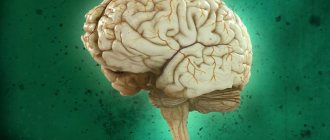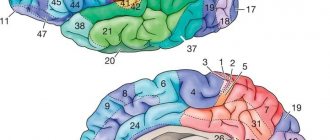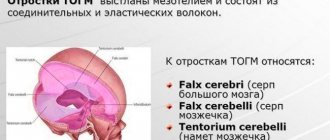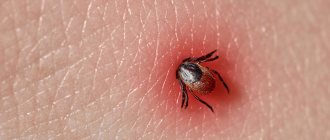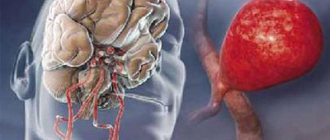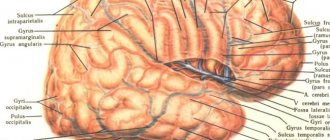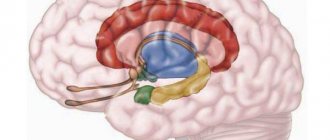Home — For the public
- Map of medical organizations
- Vaccination
- Clinical examination
- Fluorography
- Addresses and opening hours of clinics
- Emergency rooms
- Oncology
- Where to take an HIV test
- Healthy child's office
- Services
- Prevention of CVD
- Disease Prevention
- World Patient Safety Day
- Newspaper "Medical News"
- specialist
- School of Health
— Disease prevention
- HIV infection
- All about vaccination
- All about proper nutrition
- Hepatitis
- Flu
- Dementia
- Schoolchildren's health
- STD
- Tick-borne encephalitis
- Whooping cough
- Measles
- Legionellosis
- Meningococcal infection
- Oncology
- Acute intestinal infection
- Pediculosis
- First aid
- Pneumococcal infection
- Pneumonia
- Prevention of rabies
- Dependency Prevention
- Rotavirus infection
- Diabetes
- Cardiovascular diseases
- Injuries
- Tuberculosis
- Tularemia
- Physical activity
- Obstructive pulmonary disease
- Exotic infections
- Ecology
- Why is swimming in ponds dangerous?
— Prevention of addictions
- Prevention of alcoholism
- Smoking prevention
— Smoking prevention — Nicotine: disgusting, pleasant, dangerous
A drop of nicotine not only “kills the horse”, but also helps prevent the development of Alzheimer's disease. A click of a lighter, a few puffs - and after just 7 seconds, the molecules of the substance overcome the blood-brain barrier and begin to act on the brain. The effect of nicotine is not only the appearance of relaxation and high spirits. The substance also affects sleep and wakefulness rhythms, appetite, pain perception, digestion and the cardiovascular system.
Regular smoking leads to the formation of a dependence syndrome and chronic changes in tissues and organs.
Properties of nicotine
What is nicotine? It is an alkaloid - an organic heterocyclic substance consisting of carbon, nitrogen and hydrogen atoms. The group of compounds owes its name to its slightly alkaline chemical properties. Most alkaloids have an effect on the nervous system, among those. What people hear most are caffeine, cocaine, morphine.
According to its physical and organoleptic properties, nicotine is a bitter oily liquid. At certain temperatures it easily mixes with water, their densities are almost the same - about 1 g/cm3.
Nicotine dissolves well in environments with low polarity. This causes its rapid absorption through the skin and the blood-brain barrier. At high pH values, it easily penetrates through mucous membranes.
Where is nicotine found? The alkaloid is isolated from the shoots of plants of the nightshade family (tobacco, tomatoes, eggplant, potatoes). The concentration in tobacco is maximum – up to 14%. Nicotine is synthesized in plant roots, transported and accumulated in leaves. In the human body and warm-blooded animals, the compound breaks down to form safe metabolites.
Coffee
A product that definitely develops our cognitive abilities is coffee. And it's not just that caffeine is a powerful stimulant; A study published in the journal Neuropharmacology in 2013 found that caffeine improved working memory in middle-aged men regardless of its stimulant effects. The effects of drinking coffee last much longer than the couple of hours during which we usually feel its invigorating effects; A 2012 study published in the Journal of Alzheimer's Disease found that people over 65 whose blood caffeine levels indicate they drink coffee regularly were less likely to regress from mild cognitive impairment to mild cognitive impairment over the next two to four years. full-blown dementia. The study, the researchers concluded, is the first direct evidence that caffeine or coffee consumption is directly associated with a reduced risk of dementia or a delay in the onset of the disease, especially in people already suffering from mild cognitive impairment.
How much nicotine is in cigarettes
The range of lethal dose of the substance is from 50 to 100 mg. Recalling the drop of nicotine that killed the horse, toxicologists note that 2-3 drops are enough for a person. A person can get this amount of alkaloid from 1.5 packs of cigarettes.
How much nicotine is contained in 1 cigarette? The tobacco industry produces products of various strengths. The amount of nicotine in them ranges from 0.3 mg to 1.26 mg. For example, one Parliament cigarette can “supply” a smoker with 0.5 mg of nicotine, and a Marlboro “cancer stick” from a red pack can provide a smoker with 1.1 mg.
It is interesting that the strength of products in the line of one manufacturer can be determined solely as a subjective feeling. The filter of so-called light cigarettes has a larger number of perforations than their strong counterparts. This allows the smoker to draw in more air, due to which the concentration of nicotine and other toxic substances in the inhaled air becomes lower, and the taste is not so “rough”.
Another secret of “light” products: such products smolder on their own. The amount of tobacco gradually decreases, even if the person does not puff and just holds the cigarette in his hand.
The very idea of grading cigarettes was associated with an attempt by tobacco corporations to retain consumers: smoking light products was presented as a process of giving up a bad habit. In fact, people increased their daily number of cigarettes because they believed they were getting less tar and nicotine. According to the WHO Framework Convention, the labeling “light” and “soft” on the package is prohibited.
Alcohol
A 2012 study showed that people who sleep at least seven hours and drink one or two drinks a day perform better on cognitive tasks than those who sleep and drink more or less. True, it turns out that moderate drinkers are consistently ahead of teetotalers, and oversleeping is no less harmful to mental activity than not getting enough sleep. However, the most noticeable effect comes from practical brain exercises, which can be completed on sites like Lumosity.
Those who exercised their brains at least once a week thought 9.8% faster, solved 5.8% more math problems correctly, and had 2.7% better visuospatial memory than people who did not develop their brain purposefully. I spend more per day at Starbucks than I pay monthly for access to Lumosity. These results are achieved by bringing boring but proven cognitive exercises, including N-back and complex number memory tasks, into exciting and colorful computer toys.
How quickly does nicotine leave the body?
After inhalation, nicotine is quickly absorbed into the bloodstream and reaches the brain within a few seconds. The half-life (the time during which the concentration of a substance drops by half) is about 2 hours. Depending on the length of smoking and the method of tobacco use, the rate of intake and metabolism may vary. Information about this helps to understand:
- with what frequency does a person feel the need to “take a drag”;
- how to choose the right therapy to alleviate withdrawal symptoms.
About 30% of the nicotine that enters the body is excreted unchanged, the remaining 70% in the form of non-toxic cotinine. The complete breakdown cycle of nicotine takes about 6-8 hours. When answering the question of how long nicotine is removed from the body, experts give a time frame of 1-2 days.
Interestingly, the name of the cotinine metabolite is an anagram of the word “nicotine.” The substance has an affinity for H-cholinergic receptors, providing a weak anti-anxiety and antipsychotic effect. Its half-life is up to 20 hours. The study of the duration of the last use of medications or smoking is assessed by the presence of cotinine and nicotine in the urine.
Literature:
- Nevzorova Vera Afanasyevna, Zakharchuk N.V., Agafonova I.G., Sarafanova N.S. Features of the development of cerebral vascular dysfunction in arterial hypertension and smoking. — Pacific Medical Journal, 2013.
- Zakharchuk N.V., Nevzorova V.A., Shumatov V.B., Shestakova N.V., Gonchar E.Yu. Substance p in the mechanisms of development of cerebral dysfunction in chronic tobacco smoking. - Pacific Medical Journal, No. 2, 2021.
- Voronov N.V., Sapunov V.B. Destruction of the psycho-emotional balance of the smoker. — Health is the basis of human potential: problems and ways to solve them, 2021.
Nicotine meets receptor
The effect of nicotine on the body is realized through communication with nicotinic cholinergic receptors (or N-cholinergic receptors) and partially with adrenergic receptors.
The autonomic nervous system is responsible for the autonomous functioning of internal organs. It consists of 2 parts - sympathetic and parasympathetic. The work of biologically active substances occurs at the level of synapses - places of contact between neurons and neurons or organ cells. Each of them consists of a presynaptic. postsynaptic membranes of cells and the gap between them.
The transmission of impulses in the parasympathetic department is carried out due to the mediator acetylcholine. When it interacts with the presynaptic membrane of the receptor:
- pupils constrict;
- blood pressure decreases;
- heart rate decreases;
- peripheral blood vessels dilate;
- muscle fibers of internal organs contract;
- The secretion of sweat, bronchial, digestive, and lacrimal glands increases.
But the work of acetylcholine is not limited only to the parasympathetic system. The mediator also “puts his hand” to the sympathetic department. By connecting to a receptor on the presynaptic membrane, it has an effect reminiscent of adrenaline. Namely:
- heart rate increases;
- blood pressure increases;
- the concentration of glucose in the blood increases;
- fat breakdown is activated;
- appetite decreases.
Nicotine has a similar structure to the important C-loop of the acetylcholine molecule, but the connection of the alkaloid with the cholinergic receptor is stronger. Chemists claim that its molecule ideally replaces acetylcholine in all parts of the autonomic nervous system. The effect of nicotine on the human body is almost identical and consists of its effect on receptors in various tissues.
Your Narcologist warns: Immune reactions
Not only nicotine has a detrimental effect on the body. Inhaled smoke also contains about 300 different compounds and resins. One of them is NNK, a toxic agent that causes the immune system to perceive brain cells as foreign, harmful.
NNK is embedded in the cell wall of neurons, which changes their structure for immune cells. As a result of this, an inflammatory reaction occurs and immunocompetent cells that destroy foreign agents begin to destroy healthy brain cells. All this leads to irreversible damage.
Nicotine and the brain
The effect of the alkaloid on the brain is associated with the activation of α4β2 receptors. They make up more than 80% of all H-cholinergic receptors in the central nervous system. Nicotine's affinity for them is so high that even acetylcholine cannot compete with it. These receptors take part in the release of mediators such as dopamine, GABA, and glutamate. This is how smoking improves attention and memory.
The effect of nicotine on the human brain is:
- in stabilizing the emotional background;
- in reducing anxiety;
- in increasing resistance to stress;
- in accelerating the reaction;
- in improving the perception of visual and auditory information.
In addition, the alkaloid activates metabolism in brain tissue and delays cell death. This circumstance formed the basis for clinical studies that have proven the effectiveness of nicotine as a means of preventing atrophic brain lesions (for example, Alzheimer's disease).
The effect of relaxation and increased resistance to stress, for which acetylcholine is responsible, plays a cruel joke in the formation of addiction. Since nicotine binds better to receptors, the body stops producing the mediator on its own. If a person decides to give up cigarettes or, due to various circumstances, cannot satisfy his nicotine hunger immediately, anxiety and irritability appear. Gradually, the addict begins to resort to smoking not in order to feel great, but in order to eliminate discomfort.
Symptoms of physical dependence are due in part to endogenous opioids in the brain. A constant supply of nicotine promotes the release of endorphins and enkephalins, which play an important role in reducing pain.
Nicotine “vigor” and “attractive slimness” are the result of the influence of the alkaloid on a certain group of neurons in the brain. These cells secrete substances that are involved in reducing appetite, breaking down fats and maintaining a high level of activity. When quitting smoking, a person may feel the need for large quantities of food and become lethargic and drowsy.
Video games
Today it is already obvious that the old dogma, according to which learning one thing does not develop other skills and abilities, is dead. Our brain is constantly bombarded with much more information than we actually use to make decisions and control our behavior. A key aspect of success is correctly identifying what information is relevant to a particular task and what information should be ignored or discarded as irrelevant. This is an integral part of our daily life. By learning to focus more clearly on the necessary characteristics and features of your environment, without being distracted by extraneous things, you will achieve much more.
The discovery that first-person shooter games (simply put, shooting games) develop cognitive skills was made back in 1998. By forcing players to simultaneously perform a number of different tasks (spotting new enemies, tracking the actions of existing ones, avoiding their attacks and bullets, etc.), this type of video game forces them to use three different aspects of visual attention to the limit. After just ten days of game training, this significantly affects the ability to perform new, unusual tasks and operate in unprepared terrain. Therefore, although video games may seem like a rather mindless activity, they can radically increase the efficiency of visual processing and improve a person's attention. Evidence of their benefits has accumulated enough that today endoscopic surgeons and operators of American military drones regularly train in shooting games, honing the accuracy of movements and speed of reaction.
Nicotine and the cardiovascular system
As described earlier, the effect of nicotine on both parts of the autonomic nervous system is realized through changes in the lumen of blood vessels, heart rate, and fluctuations in blood pressure. Arterial spasm, tachycardia and increased pressure are the result of the release of adrenaline. The heart begins to work in emergency mode, pushing blood through narrowed vessels. It is forced to cope with the increased load. If a person smokes continuously, the blood vessels are constantly spasmed.
Nicotine also reduces the level of a substance called prostacyclin, which helps large and small arteries relax after contraction. The blood supply to all organs deteriorates, including the most important ones - the brain and heart. In fact, a smoker lives in a state of hypoxia.
Active and passive smoking destroys the membranes of cells located on the inner surface of blood vessels. Thus, changes in the aortic endothelium are observed even in infants 1 month of age, if their mother does not part with a cigarette. The dangerous effect of nicotine on human blood vessels can lead to sudden death. The risk of acute coronary syndrome in adult passive smokers compared with those isolated from tobacco smoke increases by almost 100%.
Activation of lipolysis and damage to vessel walls accelerate the development of atherosclerosis of any localization.
In addition, nicotine affects the rheological properties of blood. It increases the ability of platelets to stick together. Small clots form in the vessels. Blood viscosity increases, flow rate decreases. The presence of damage to the vascular wall leads to adhesion of formed elements and the formation of wall thrombi.
So the effect of nicotine on the human heart and blood vessels is to increase the risk of developing:
- arterial hypertension;
- coronary heart disease;
- heart attack, stroke;
- gangrene.
Risk of stroke from smoking
Tobacco smoking increases the risk of stroke by 2 or more times. The main mechanisms of development of this disease:
- Dislipoproteinemia - a decrease in the level of “good” cholesterol and an increase in “bad” cholesterol leads to the formation of plaques and the closure of the lumen of blood vessels.
- Increased blood viscosity - decreased blood flow speed.
- Damage to the inner layer of blood vessels is a violation in the regulation of the lumen of the vessel. It is also the basis for the sedimentation of cholesterol and the formation of cholesterol plaque.
Foreign language
What about bilingualism: is it possible to increase fluid intelligence by learning a second language? A 2010 study at the Memory Clinic in Montreal, where many residents speak French and English from early childhood, found that people who were bilingual from birth were just as susceptible to Alzheimer's disease at any given age as people who spoke only French. one language. But immigrants who arrived in Canada and spoke only their native language, and then were forced to learn French or English, as a rule, contract this terrible disease almost five years later.
A number of other studies suggest a similar conclusion: learning a second language sufficiently for a native speaker to be considered bilingual does indeed appear to be able to delay the onset of Alzheimer's disease. This is, of course, wonderful. However, it must be said that, in general, scientists associate absolutely all forms of learning with delaying the age at which a person can develop dementia.

